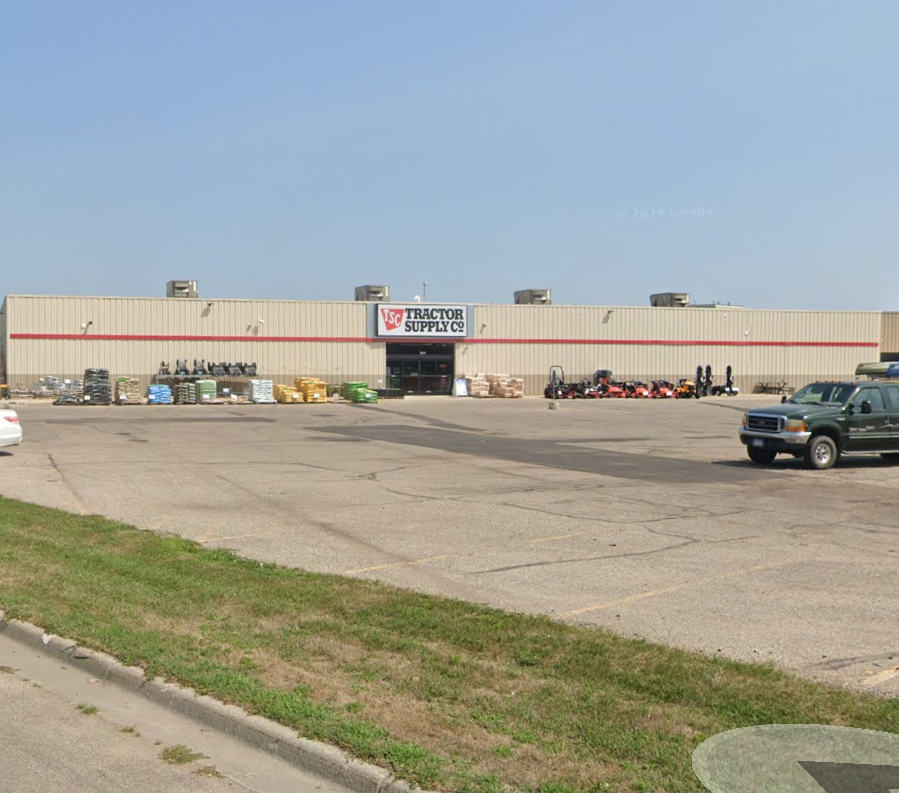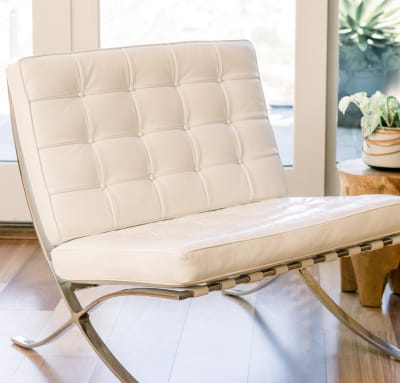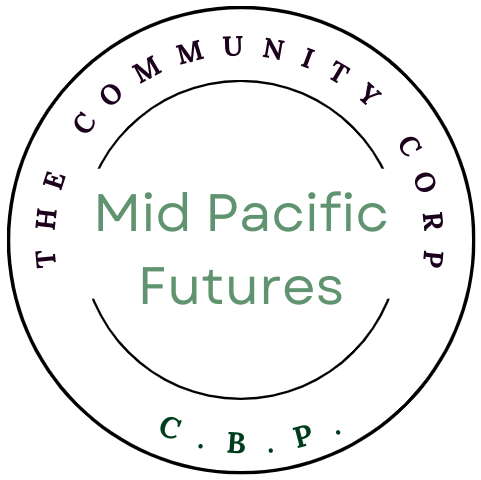What is TCC?
The Community Corp (TCC) is a Colorado-based (C-Corp) focused on acquiring and holding commercial real estate-backed business assets.



About TCC
TCC is structured into 35 Limited Liability Companies (LLCs), each containing members contributing to and participating in a commonwealth model (presentation available upon request) that creates exponentially sustainable, multigenerational asset growth.
The Company is positioned to be publicly traded in the foreseeable future. However, no guarantee can be made or is hereby asserted.

The Community Corp

Mission
We are on a mission to build shareholder and member value, the Company manages its member base via its online subscription-based community platform (thecommunitycorp.com), which provides community connectivity and access to various functionalities and services to stimulate recycling value flow.
TCC is the gateway for its members who dare to imagine and then access the limitless opportunities of TCC’s commonwealth model to build personal wealth, rediscover community, and support their entrepreneurial business initiatives.
Solution
The driving force of TCC is its asset-based generational commonwealth-building model for all members, whether they are business participants or not.
A percentage of revenues generated from the assets are then cycled into funding new operations of member-managed entities that span business sectors.
The TCC ecosystem breaks out into two primary top-level functions:
The Parts
- A private online and offline membership community that coordinates and communicates with its members through its online community platform, with strategically located Celebration Centers and businesses.
- A corporate holding company with 35 subsidiary LLCs containing its member-operated businesses, each fueled by TCC real estate holding revenues, focused on local retail, online e-commerce, professional services, education, leisure and hospitality, specialty healthcare, and information services.
To call TCC an investment company is missing the point.
An investment company receives your money as a lump sum or a weekly or monthly investment.
They invest this money in shares, bonds, high-yield bank accounts, and even mortgages. They may get involved in equity acquisitions, and this might be:
- Buy a business, carve it up to sell off the parts, and make a profit.
- Buying an underperformed asset, restructuring it so as to get it working again, getting it to make a better profit, and then selling it off for a higher price
- In the rare case, the investment company buys an asset, puts it in its portfolio, and lets it be a continuously performing asset, strengthening the company’s overall health.
Investment companies rarely use this last option.
Either they lack the skills to manage such businesses, the time frame to profit is too long, it does not offer the instant return that a carve-up does, or it requires too much effort on the part of the investment company.
Yet this last option of acquiring performing assets, taking them on to never sell them, and letting them become the powerhouse because of their equity to stimulate the next round of asset acquisitions is exactly what TCC is into doing.
What TCC does!
Unlike an investment company, where you put your money, which is ALL you do, TCC is a commonwealth of participants. We are a community with economic capacity working together for our common good. It does not matter if you start at only the 8.88 a month level; do this and then join some of our zooms.
I really suggest that you become a premium member at 25. This gives you access to the private marketplace to buy and sell, access to special offers with our community, and the ability to submit business proposals for TCC partnership funding.
Part of our business is always giving a return. The premium membership, at $25 per month for 36 months, is converted back to you as $900 in TCC stock shares.
Also, this premium membership price will increase, so get it now. You get to lock this membership in today at $25 a month.
This Premium membership also highlights our fundamental idea that we are all capable of business. You may not think you could be a business today, and I ascribe that to the world, turning you into a product—a product that social media uses, a product to be sold stuff, a product to be taken advantage of.
As a community, you get to upskill yourself to become a producer of things rather than just a consumer of things.
We use words like Commonwealth, Community, and Participation; we don’t use words like Investment, Broker, or Fund Manager because we are different.
More than just using your money to buy stuff. We position money as part of a structure that empowers us to buy performing assets.
It might help to talk about equity a little bit.
Unlike how the word equity is used in social media today, The true meaning of the word equity is of value. The equity is the value you have in a thing over the cost of the thing.
- Let’s say I have a farm with 2000 sheep.
- Those thousand sheep are worth something; they are my asset.
- The farm costs me something to run.
- I have to pay the wage of a shepherd.
- I have to buy food for the sheep.
- I have to pay for a vet from time to time.
- I have to service the mortgage on the farm.
- The sheep have lambs every year, they produce.
- Food
- Wool
- Extra animals for sale.
Equity is the value of my assets less the cost of my liabilities, and hopefully, that number is positive.
- 2000 sheep x $100 each = $200,000 asset value of the sheep.
- One Farm valued at $ 1,000,000
- Total Assets 1,200,000.
Current liabilities go up and down month by month
- Wages, bills, food, mortgage payments, $20,000
- Mortgage on the farm: $500,000
- Total Liabilities $520,000
Equity is Assets less Liabilities.
- $1,200,000 – $520,000 = $680,000
While this is represented as a dollar amount, the farm is more than that.
- It is also the ability to produce an income.
- To service the mortgage.
- And provide a desired lifestyle.
TCC is in the business of acquiring performing assets.
We look for companies with a positive equity and balance sheet.
A positive balance sheet is that year on year all incomes, less all expenses, equals a profit.
We have community members who are skilled in the area of these businesses to oversee them. The businesses themselves remain with their existing managers and employees; we work to benefit them as well as us.
Our community has people who are being actively trained to become skilled business overseers.
The trick is to be skillful at working on a business and not sucked down into the weeds of the business.
What does this look like in practice?
The money we receive from Membership Fees, Lifestyle Allowances, and Equity Positions creates activity.
Our partner Banks like to see activity, and this continued activity gives them confidence to partner with us.
Banks are often used as a guarantee and a backstop to our activities.
We also become our own ‘bank,’ creating our own ‘mortgage papers’.
So rather than taking the money that we have coming in and going out and buying a performing asset.
We let the various companies we own do the heavey lifitng.
We have company…
Let’s call this company Alpha LLC
I am now a part-owner of Alpha LLC. I entered into Alpha LLC with an equity position; the minimum amount that we can do this with is $5,000.
Many people have done this; I am just one of many.
Alpha LLC legally and financially combines this money with a partner bank to create a mortgage package, which is available to be loaned.
We are also Company Beta LLC, which, at its conception, is literally just a piece of paper—its document of incorporation.
Beta LLC receives a letter of intent to be provided with a mortgage from Alpha LLC.
Beta LLC now goes out and buys this existing company, Gamma LLC (A tractor repair business in North Dakota; this actually happened). Using the mortgage money from Alpha LLC, our company Beta LLC buys Gamma LLC. The previous owners have been paid, and now Beta LLC is the new owner of Company Gamma LLC, with a mortgage back to Alpha LLC that it has to pay off.
The company Gamma LLC is a performing asset that generates business and makes a profit.
The company Gamma LLC’s profit goes to Beta LLC.
Then Beta LLC pays off its mortgage to Alpha LLC.
Alpha LLC pays me my agreed-upon amount back in cash, which I must pay taxes on.
As someone who put money into Alpha LLC, I am now a part owner of Alpha LLC and Beta LLC, and Beta LLC owns Gamma LLC.
It’s true that Gamma, the actual Tractor Repair Company, is not really worth anything, but that is where all the activities happen; it is the engine. Beta, as the owner of Gamma, is where the wealth lies. Then you could think of Alpha as the water line that provided life-giving water to Beta at the beginning. Now, the water or the money is flowing in the other direction from Beta back to Alpha, and that is how I get reimbursed for the money I put up in the first place.
When we first purchased Gamma, both companies Beta and Gamma were seen as liabilities, especially by banks. They had not yet proven themselves. Could Gamma continue to generate enough profit to pay off Beta’s mortgage to Alpha?
- Was the business, Gamma, viable?
- Did Beta have the ability to manage Gamma well?
- Over a period, sometimes as low as two years, but generally five years, Beta a& Gamma move from being a liability to becoming a performing asset, and its equity (assets – liabilities) is now seen as cash in kind.
- That value is “realized.”
- Banks like us and want to work with us, and we work with them at all levels.
This act of using our money to create a mortgage for a business to buy a business means our money may be returned to us faster.
However, using our money as a mortgage is only one way of doing this.
We have had a chunk of money, $1,000,000, in our Company Alpha.
A bank will provide us with a line of credit of $1,000,000 against this.
We take this credit position. Company Beta, owned by Company Alpha, goes out and buys a new company, Delta, a new performing asset.
This new asset, Delta, starts as a liability; we can not touch the $1,000,000 in Alpha as the Bank has a hold on this money.
This new asset performs as it was.
After anywhere from two years to five years, the bank now says the asset is a realized asset, and its value is considered cash in kind.
Liability, equity, performing asset, realized asset, and cash in kind are all terms that mean things.
The house you live in may seem like an asset, but it is really a liability. It is not making you any money. It may be going up in value, but you have no income from it. Therefore, it is not cash in kind.
- Company Delta is performing.
- The banks are happy
- Beta, which purchased Delta, can now take on the mortgage that it used to purchase Delta in its own right.
- The value of Delta inside the company Beta is a realized asset; it is cash in kind.
- The Bank now tells Alpha that we no longer need a hold on your $1,000,000.
- Alpha now creates the company Epsilon and gets another $1,000,000 line of credit from the partner back with a new hold on the same $1,000,000.
- Epsilon buys Company Zeta, and the process starts again.
- Your money in Company A, part of that $1,000,000, is never spent, it was never at risk. Be it Membership fees, Lifestyle Allowances, or Equity Positions.
Wealth grows wealth. This is our Commonwealth, our partner position.
An investment fund…
…may do exactly the same thing as us but does it under layers of hiddenness.
We do this out in the open with you.
- An investment fund may guarantee you a 6.75% return on your $100,000.
- You get the guarantee of $6,750 each year and are happy.
- What you don’t see is all the other returns that the investment firm keeps for itself.
For me, what I have is my money back at the end of the five years.
- My yearly return has been between 7% and 10%, depending on the equity position I was involved in.
- And I have an agreed-upon equity stake in companies Alpha & Beta.
- One of my original participants was $5,000, and my % ownership of Alpha & Beta was a proportion of their value when all this started.
- The value of my ownership in Alpha & Beta will change over time, as will future profit returns.
This is why we don’t call this investment: We are encouraged to become actively involved in understanding the whole process.
We participate in asset acquisitions and their eventual yields.
Sometime in the future, I may be the one working on acquiring a performing asset for TCC and for our ABM, Mid Pacific Futures.

Mid Pacific Futures
This website and more.
Our ABM, our Entterance way in to Capital Building Parters, and the Community COrp.

Capital Building Partners
This is the storefron for all the AMBs. We are currently one of ten.
The maximum number of ABMs that there can be is 35.

The Community Corp
The Community Corp is where the activity of the ABMs happen, it is our private market place.




